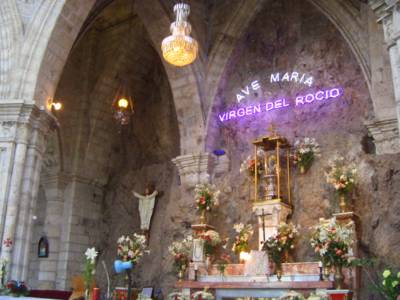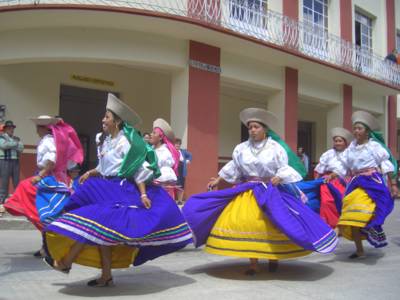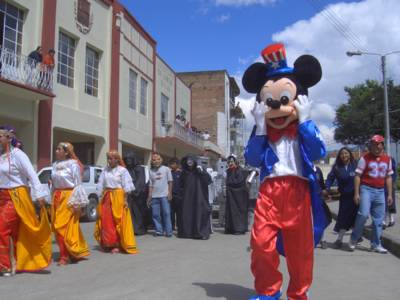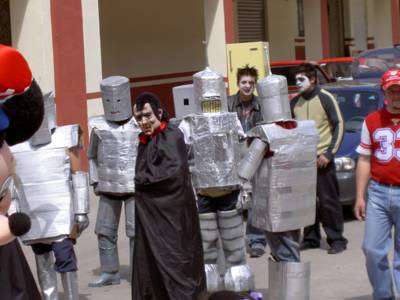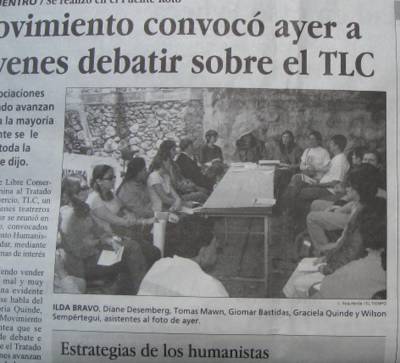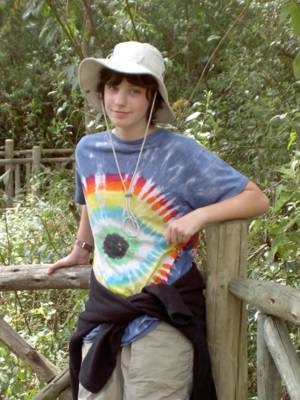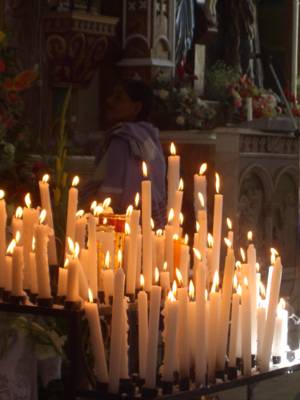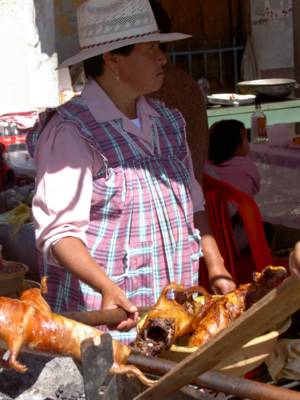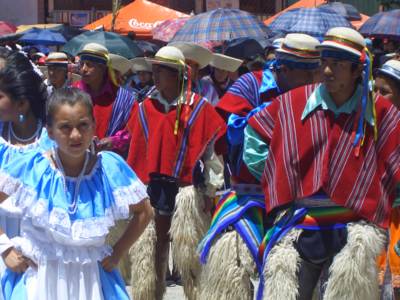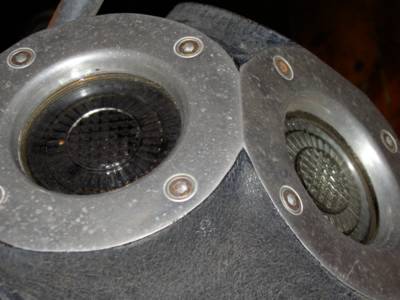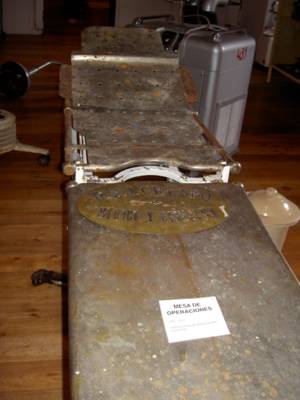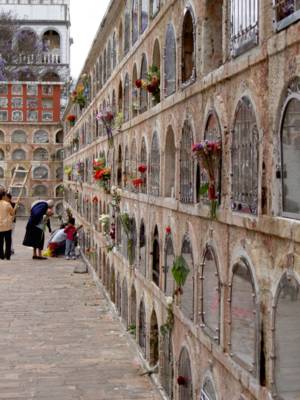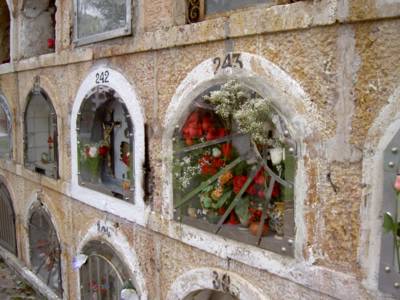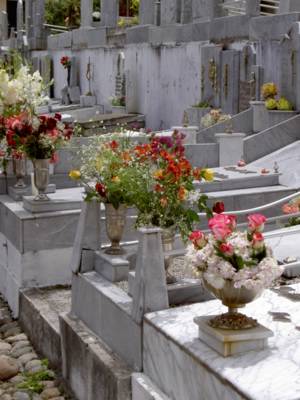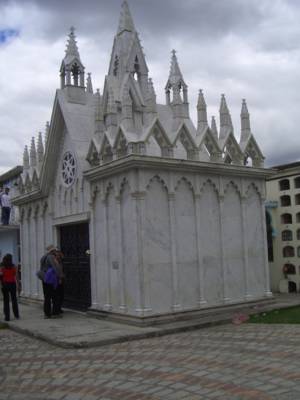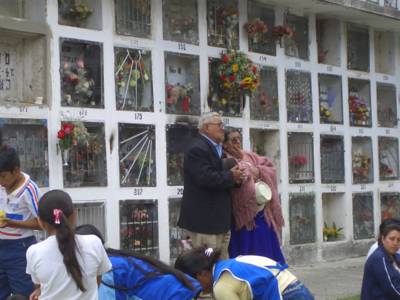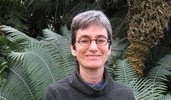Diane: The First National Classical Guitar Festival of Ecuador has been going strong all week. We have already seen two guitar concerts. The first concert was held in the Old Cathedral - the first time it had been open to the public in the many years since the restoration had started. Consequently it was very crowded. We got there almost an hour early and were lucky to secure seats. Most people had to stand.
All the chairs had been laid out on the floor. Including the chair for the performer! The first three rows were reserved for various dignitaries. And from 10 rows back, where I was sitting, I couldn't even see the performer's chair no matter how many directions I cocked my head or twisted my shoulders. Standing was starting to look quite appealing.
At the theatre at the Banco Central, where the Symphony Orchestra sometimes plays, we generally sit in the balcony. Up in the balcony in front of the first row, there is an additional row where people can stand and take pictures. Of course, people in the first row can't see around them, but that appears to be of little concern. What I found interesting is that the theatre is actually designed this way. Given this history, I was not surprised that recording equipment took precedence over the audience on that first night of the Guitar Festival. There were two video cameras to the right and left of the performer as well as one up above in a pulpit that all had outstanding views. I decided that the next guitar concert I attended would be in a traditional theatre. On the bright side, guitar is big here, the music was excellent, and I did have an excellent view of the promotional material provided by the sponsors.
We were the first to arrive at the auditorium at the University of Azuay on the fourth night of the Guitar Festival. The video camera folks, the sound folks, the television folks, and the interior decorators all arrived after us. As the stage began to fill with recording equipment, cables, and flowers, we changed seats several times and finally opted to sit in the front row a little off to the left, with a view between two sets of flowers. I think these may have been the only seats in the house with an unobstructed view. I must admit that with four microphones standing in front of the performer, even our view was a bit impaired. But not to worry, the sound quality was excellent.
On the fifth night of the Guitar Festival, Tom and I attempted to head over to the University of Cuenca Theatre. As we approached from the rear, the sting of tear gas filled our eyes. We changed direction and headed home. As an aside, I have finally read two newspaper articles about the protests that take place at this location every other day or so. They both discussed the heavy financial losses suffered by the local bus company, offered some opposing opinions on who the organizers were, but no thoughts on what their purpose might be.
I am quite impressed with the cultural amenities in Cuenca. We arrived during the political campaign season, when not much else was going on. Now the cultural season is in high swing. We've had a Film Festival followed by a Guitar Festival. Next week is some type of Dance & Drama Festival. Starting tomorrow, we move into the Christmas season, which appears to be mightily celebrated in Cuenca.

